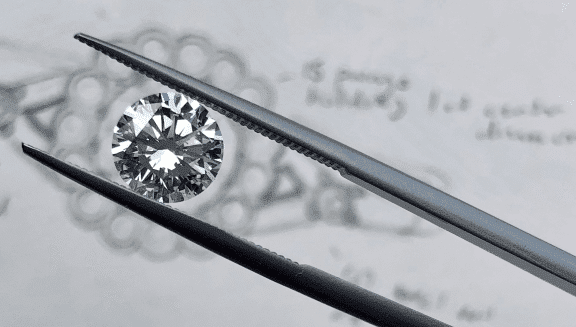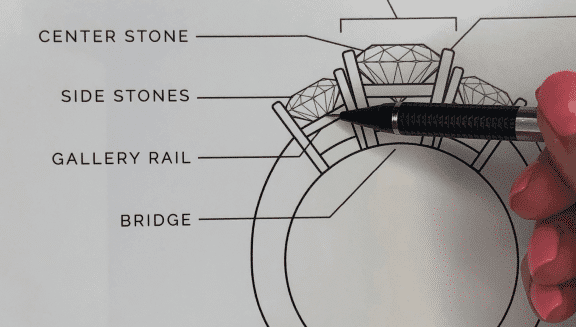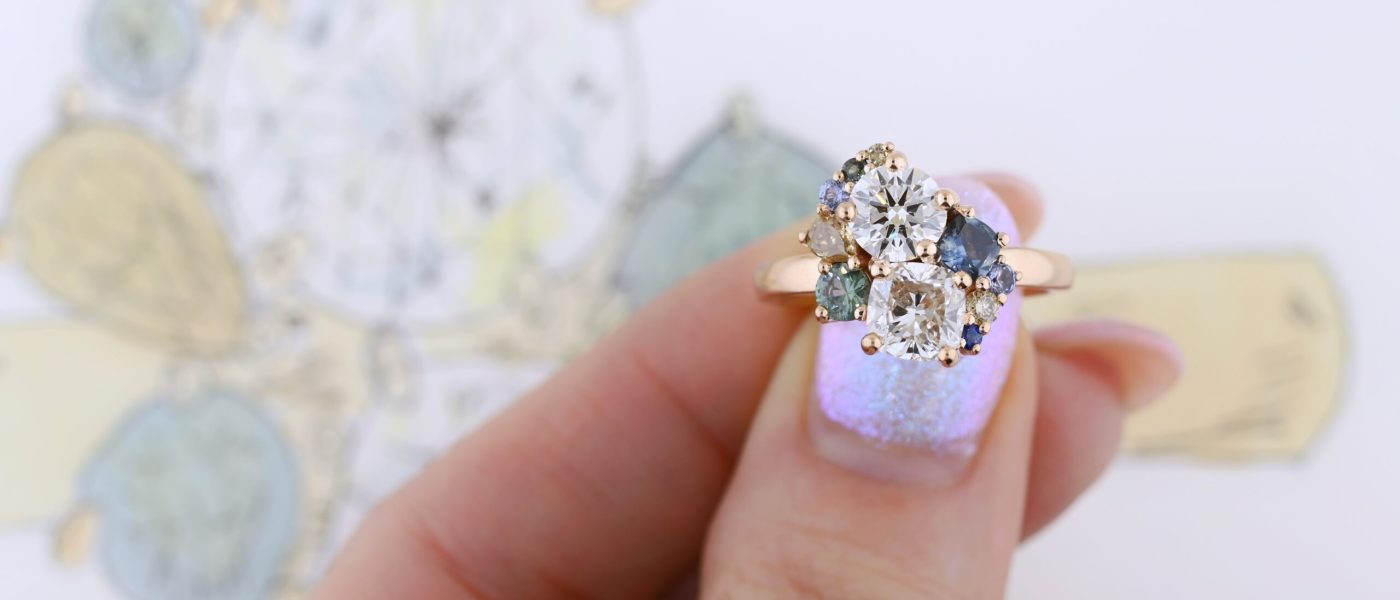
Engagement Ring Guide
The ultimate guide to everything you need to know about designing and purchasing a custom made engagement ring. Our guide covers everything you need to know—from choosing the right diamond to selecting the perfect setting. Discover tips, trends, and expert advice to help you create a ring that’s as unique and beautiful as your love story.
Anatomy of a Ring
Think of each part of your engagement ring as a design opportunity to put your unique stamp on your custom ring.
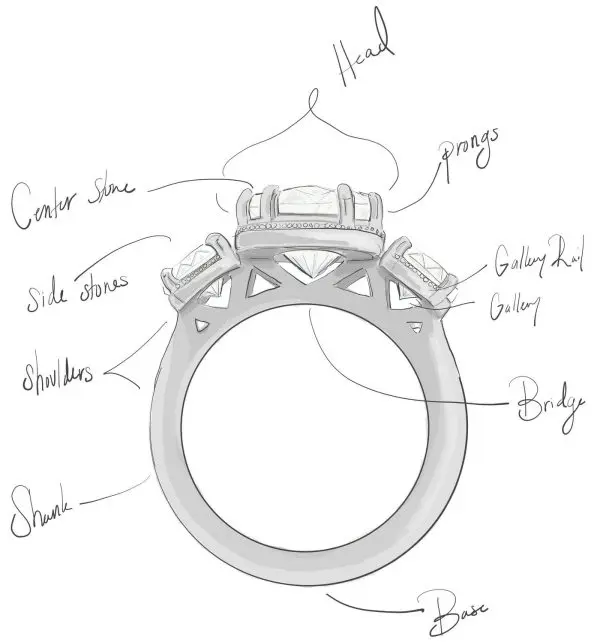
Precious Metals
Metal Types

Rose Gold
Sometimes called pink gold or strawberry gold, rose gold gets its distinct color from being alloyed with copper.
White Gold
Cool and timeless, this silvery metal adds a streamlined look to white stones.
Yellow Gold
Gold naturally occurs in yellow and has been used in jewelry since antiquity.
Black Gold
Blackened gold is not a natural metal and we do not recommend it for fine jewelry, learn why.
Platinum
Rich and sleek, platinum is one of the rarest metals on earth and is naturally white.
Palladium
Palladium is a naturally white precious metal that is hypoallergenic and part of the platinum family.

Metal Finishes
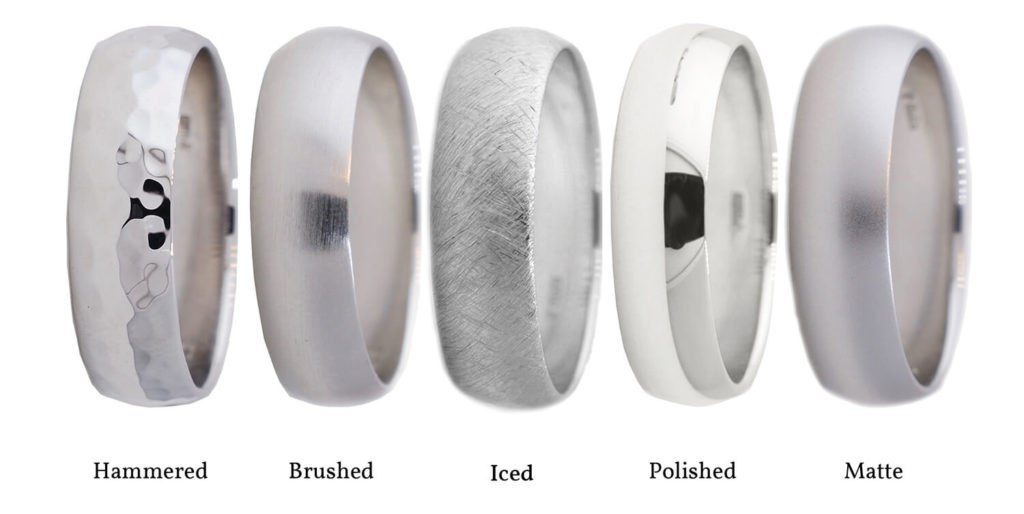

Hammered
A hammered finish adds an organic, hand forged feel to your band.
Brushed
Brushed metal gives your band a roughed up matte appearance with visible brush strokes.
Iced
An iced finish adds crosshatch like markings for texture and an industrial look.
Polished
The vast majority of jewelry has a classic shiny, polished finish.
Matte
Smooth and matte, this finish provides a stark contrast to brilliant diamonds.
Engagement Ring Cuts


Round cuts are specially cut with 58 facets to maximize light reflection or brilliance and are also called round brilliant cuts.
Cushion cut is an umbrella term for a four-sided square or rectangular diamond with rounded corners; giving the stone a soft, pillow-like appearance.
Princess cuts are typically square with sharp edges but can also be rectangular with softer edges.
The emerald cut was originally created specifically to bring out the color in emerald gemstones. When used for a diamond, it emphasizes the clarity of the stone.
Asscher cut diamonds are similar to emerald cuts, but with larger step facets, a higher crown, and a smaller table.
With 58 facets, oval cut diamonds are just as brilliant and sparkly as round cuts and can vary from very long and narrow spheres to shorter, rounder ovals.
Pear cut diamonds or teardrop diamonds have 58 facets and are cut in the brilliant style.
Hexagons are not a cut, but a six-sided, hexagon shaped stones and can be brilliant cut or step cut.
Radiant cut is a deep cut perfect square with rounded edges and cut corners, with the brilliance of a round cut.
Most often used as accent stones, trillion cuts are triangular, three-sided stones.
Rose cut is an antique cut, created before brilliant cut, and was designed to shine in the low-light of gas lamps and candles, pre-electricity.
The marquise cut is an elongated oval with two pointed ends and 56 or 58 facets for maximum fire and brilliance.







Diamonds
Diamond Carat Size
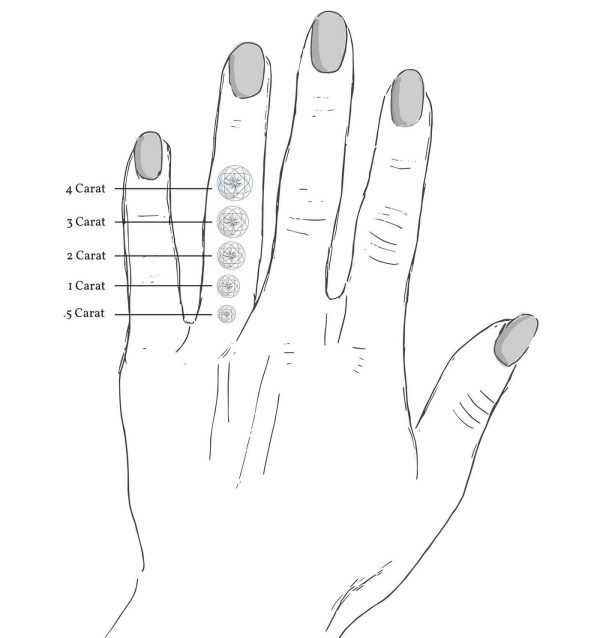

Carat measures the weight of the diamond. Generally speaking, the higher the carat weight, the bigger the diamond, and the bigger the price tag.
White Diamond Color
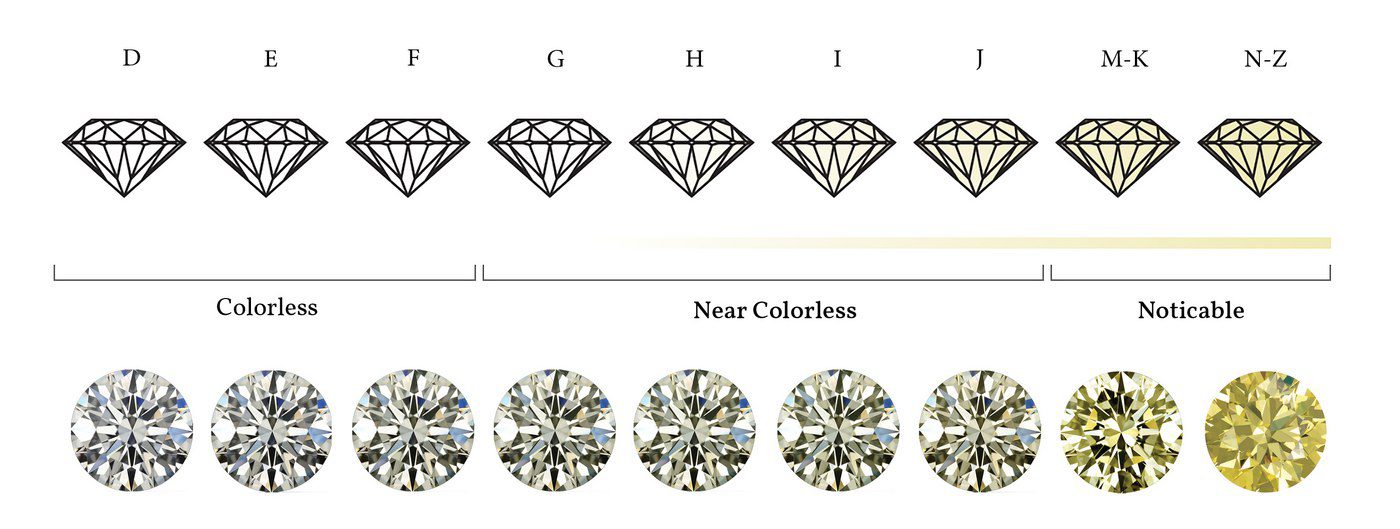

White diamonds may seem equally colorless upon first glance, but every diamond contains unique degrees of color ranging from colorless to yellow and brown. All diamonds are graded using the GIA color chart, ranging from a completely colorless D to a yellow Z. All D-Z diamonds are considered white diamonds, and the less color, the higher its worth.
Diamond Clarity


The clarity of the diamond is graded on how well light passes through the stone, without being interrupted by inclusions (little spots and clouds inside the diamond). Inclusions obstruct light from bouncing clearly between their facets and affect the way your diamond sparkles.
DIAMOND OPTIONS
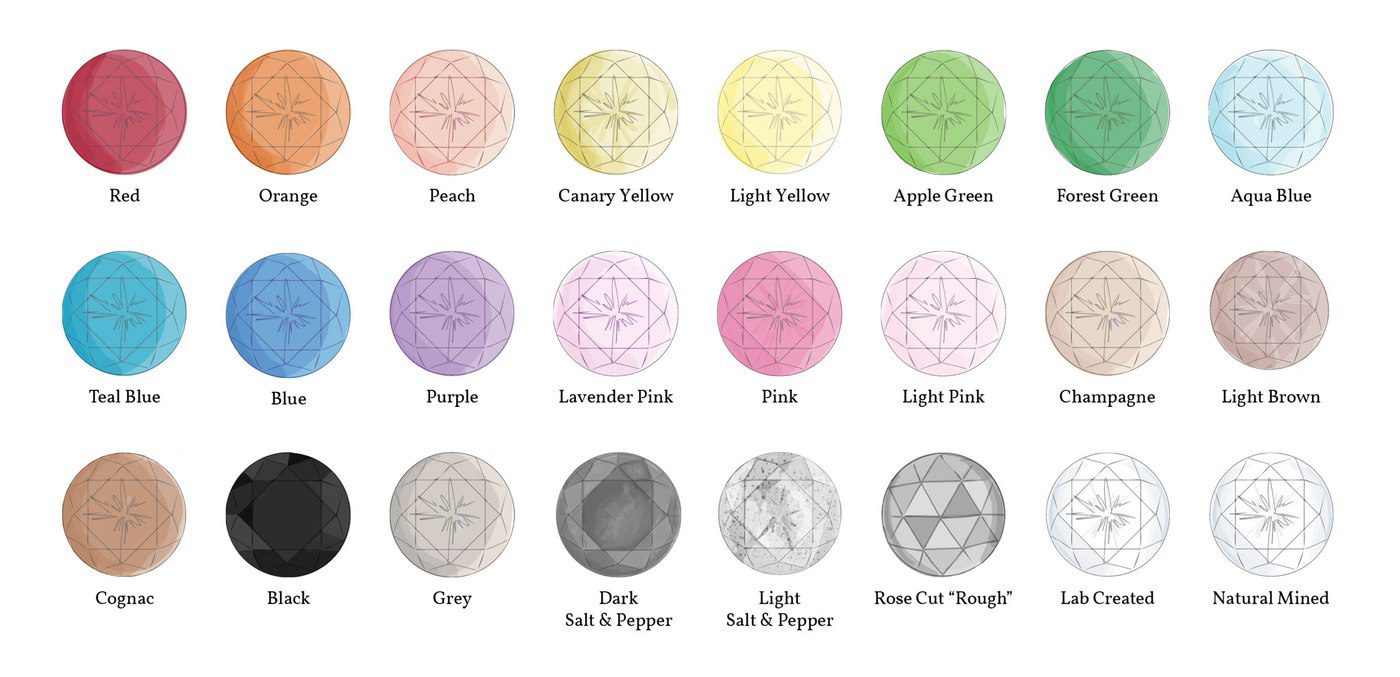

A classic for a reason: all diamonds are nearly indestructible and the most durable choice for an engagement ring, and white diamonds are the most classic and versatile color.
Rough diamonds go by a few different names including raw diamonds, rustic diamonds, rose cut diamonds, and salt and pepper diamonds. These diamonds have a smokey, clouded appearance because of their inclusions.
Black diamonds are formed naturally when high amounts of other minerals are trapped inside the diamond during its formation.
Colored diamond engagement rings give you the bold color of a gemstone with the benefit of a diamond’s durability. Also referred to as “fancy colored diamonds”, they occur in naturally in blue, yellow, pink, champagne and more; there are also color-enhanced, and heat treated diamonds.
Lab grown diamonds AKA man made diamonds are chemically and structurally identical to mined diamonds, but are grown in a controlled environment in a lab instead of formed in and mined from the earth.







Gemstones
Gemstone Options
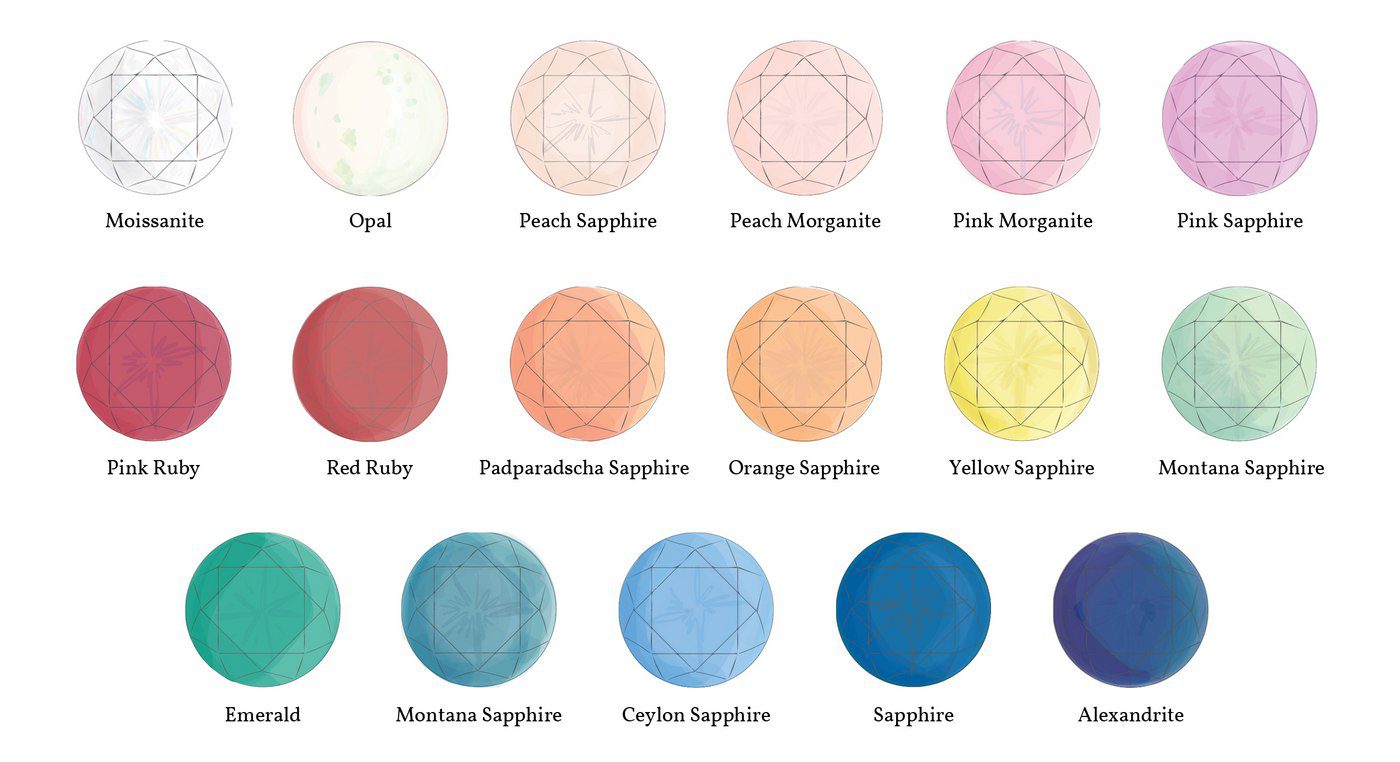

Blue sapphires are classic and elegant, but did you know that sapphires come in every color of the rainbow?
Famously worn by Cleopatra, Jackie O, and Beyonce, emeralds are sophisticated and bold, but they do require more care than most engagement ring stones.
Fiery and passionate, rubies have been revered throughout history.
Blushy and warm, morganite engagement rings are the second most popular choice for gemstone engagement rings.
Rainbow-like an ethereal, nothing is quite like an opal engagement ring. However, we don’t recommend them for most people.
Referred to as “emerald by day, ruby by night,” alexandrite is a very rare color-change gemstone.
No other stone has the distinct color play of a moonstone. However, we don’t recommend moonstone engagement rings for anyone.
A gemstone that looks very similar to diamonds, but is 100% ethical and more budget-friendly.
Lab created gemstones are chemically and structurally identical to their mined gemstone counterparts that were grown in the earth, the only difference being that lab gemstones were formed in a controlled laboratory environment.







Mohs Scale of Hardness
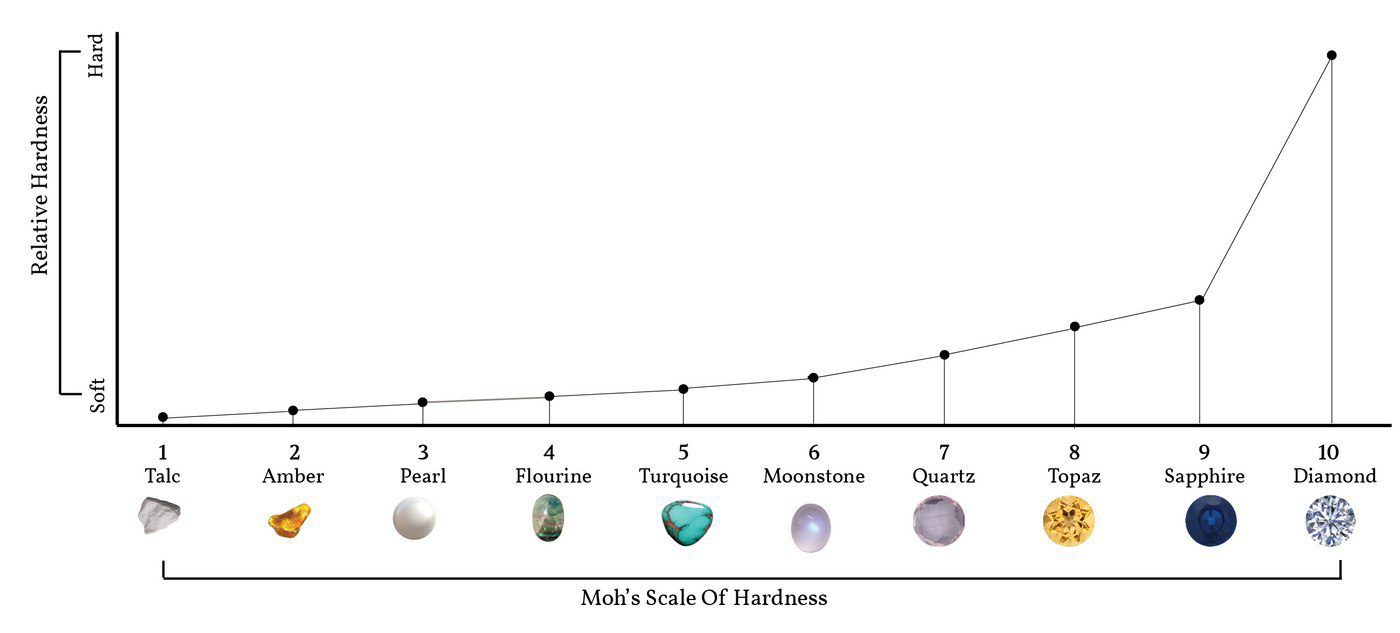

Developed in 1812 by German geologist Friedrich Mohs, the Mohs Hardness scale (pronounced “moze”) is used to identify a gem or minerals hardness and resistance to being scratched. This scale has been used by jewelers and geologists for centuries and is still the undisputed authority today.
Gemstone Index


Engagement Ring Settings
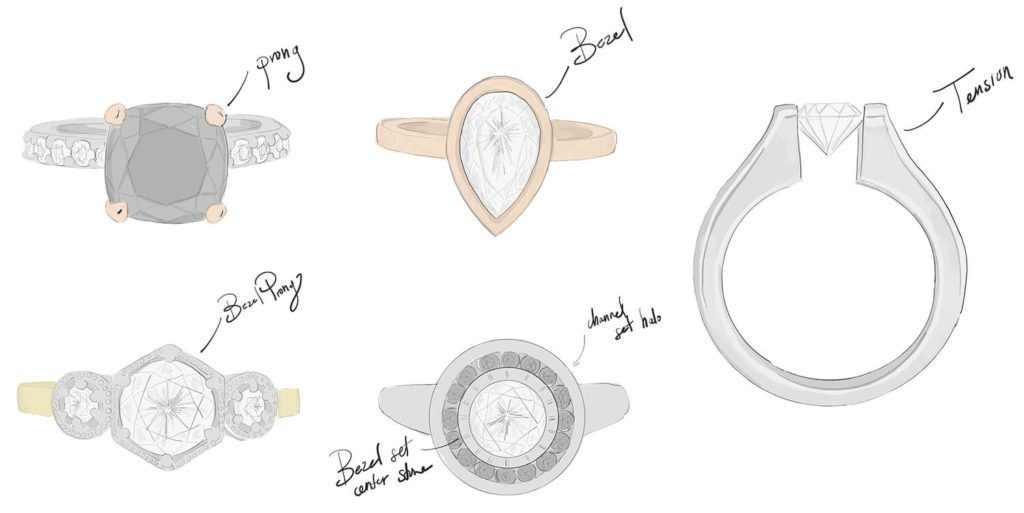

Prong setting is the most popular and the most common setting technique, with small prongs or claws holding the diamond or gemstone in place.
A bezel setting means that the stone is flush fit with metal surrounding the perimeter of the stone surface for an overall smooth look and feel and a low profile, low sitting stone.
Bold and futuristic, tension setting is a beautiful technique, but we won’t use it.
A channel setting means that a band has a channel or ident in which small stones are set and secured between two metal bars. The center stone will be set in a different style.
A bezel prong setting is a signature Abby Sparks Jewelry setting that is a hybrid of prong setting and bezel setting.







Engagement Ring Styles
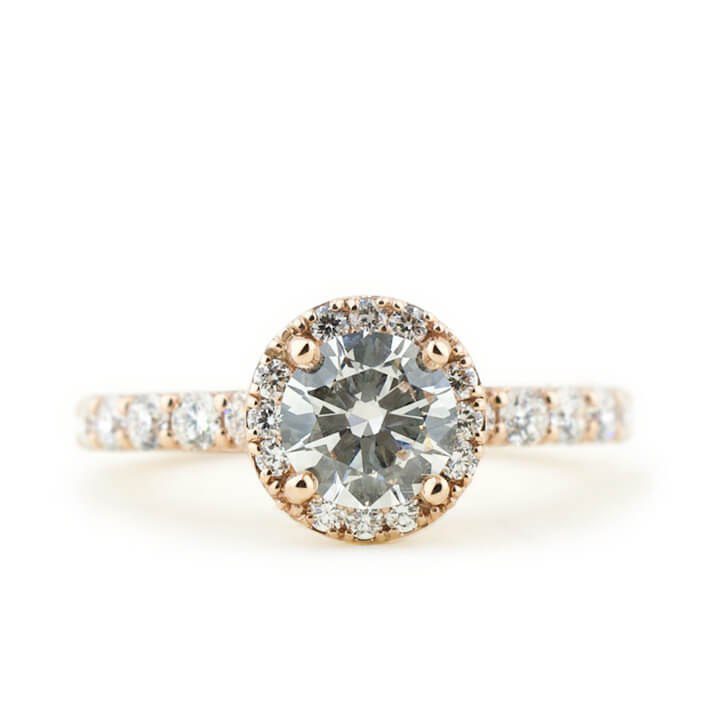

A halo engagement ring has a center stone that is surrounded by a ring or halo of diamonds or gemstones. Halos add extra brilliance and sparkle and can make your center stone look bigger.
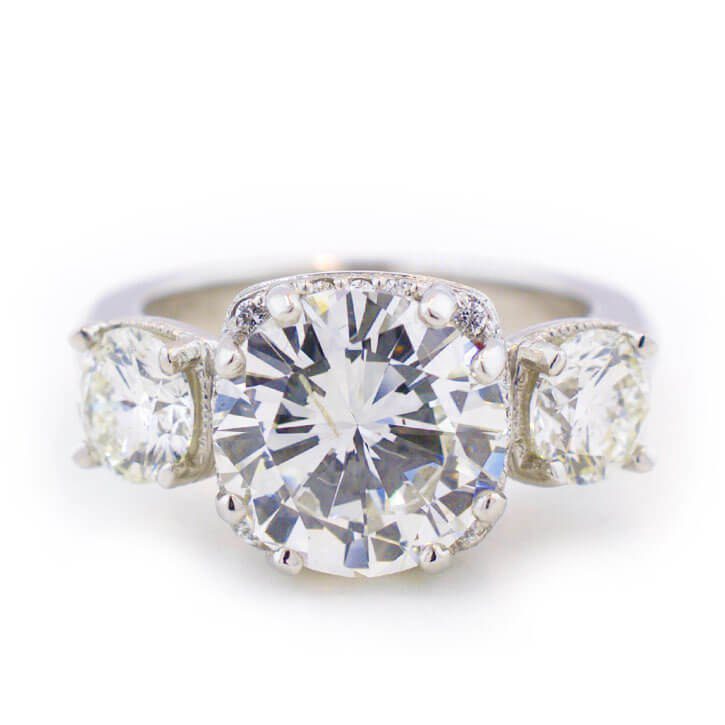

Three stone engagement rings typically consist of a large center stone with two smaller stones on either side to represent the past, present, and future.
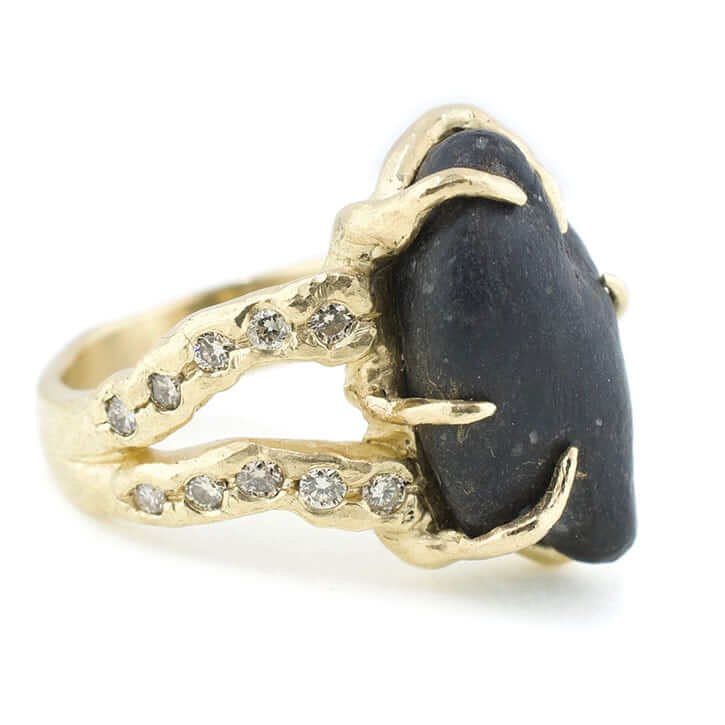

Most rings have a single band, but a split shank is a band that is split it two or more pieces, connecting on the side or back of the ring.
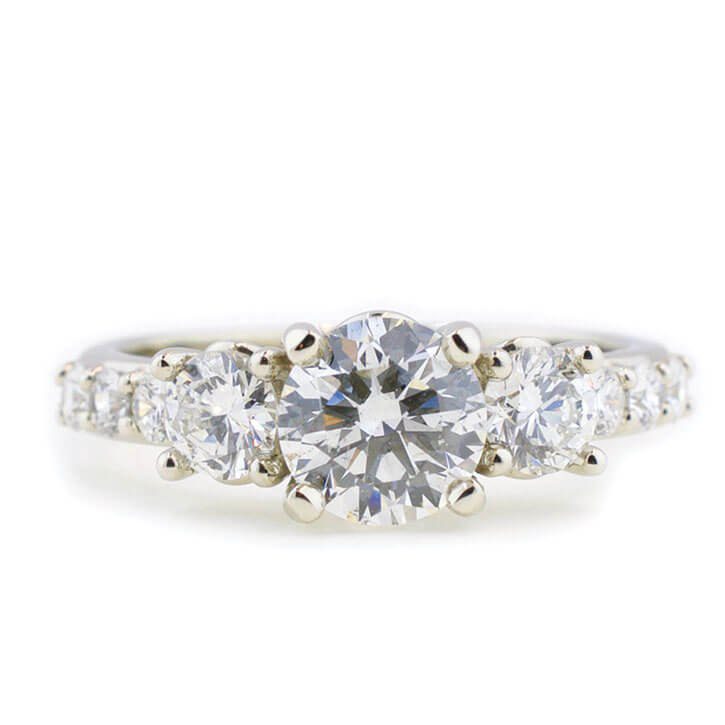

Traditional
A traditional engagement ring means different things to different people but typically means a diamond engagement ring in yellow gold or white metal in a classic solitaire, halo, or three stone design.


Minimalist
Minimalist styles feature sleek, understated designs and clean lines.
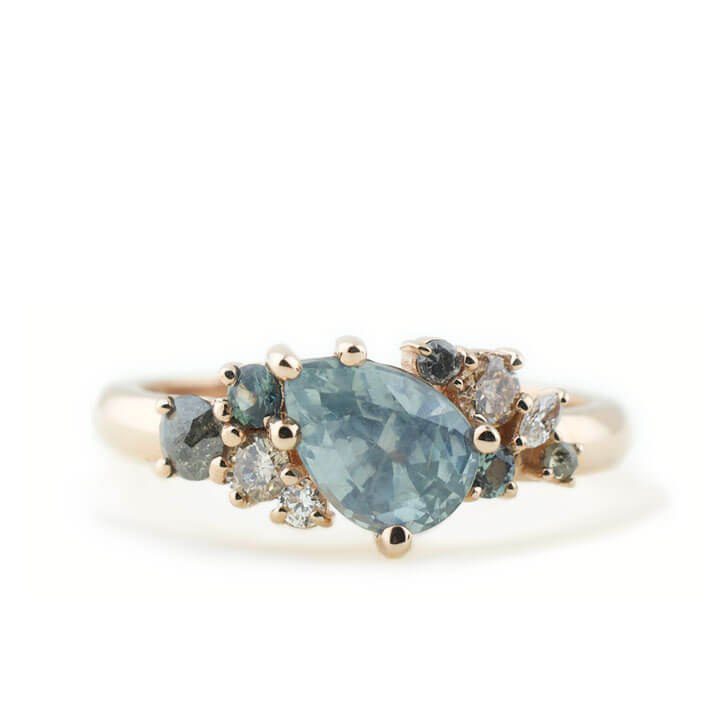

Cluster engagement rings feature an assortment of clustered accent stones arranged in any pattern or design around a main, center stone.
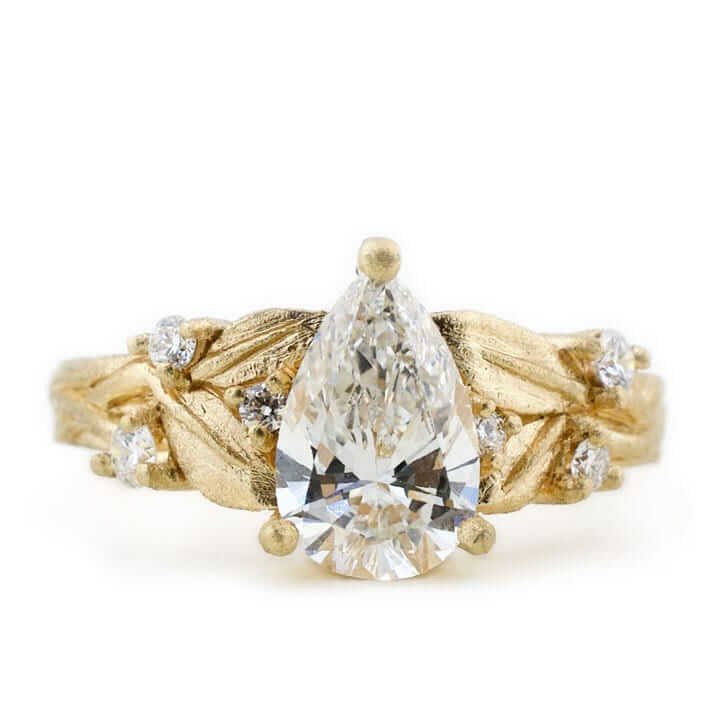

Nature Inspired
Nature inspired engagement rings incorporate themes from the natural world and can include leaves, flowers, twigs, vines, waves, sunbeams, and celestial-inspired details.


Organic
Organic engagement rings have an imperfect, asymmetrical or handcrafted appearance. They have a hand forged, artisan feel.
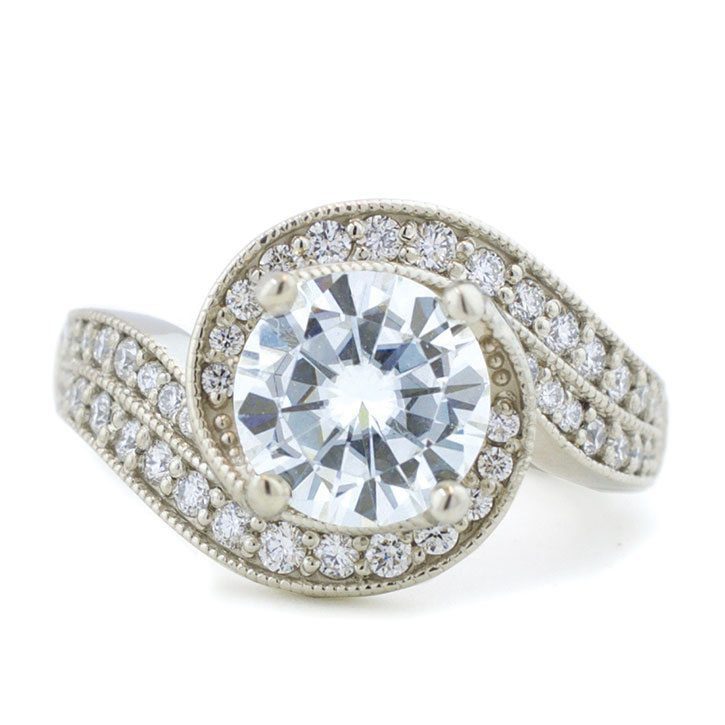

Twist
Twisting details can take the shape of one or multiple twisted or braided metal bands.
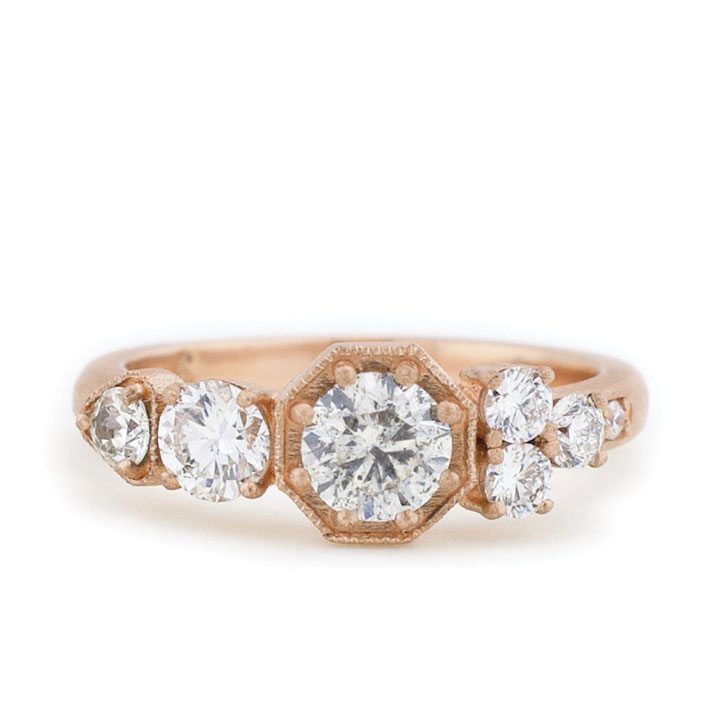

Geometric Shapes
Bold shapes like hexagons, triangles or a mix are present in the stone cuts or in the metal details.
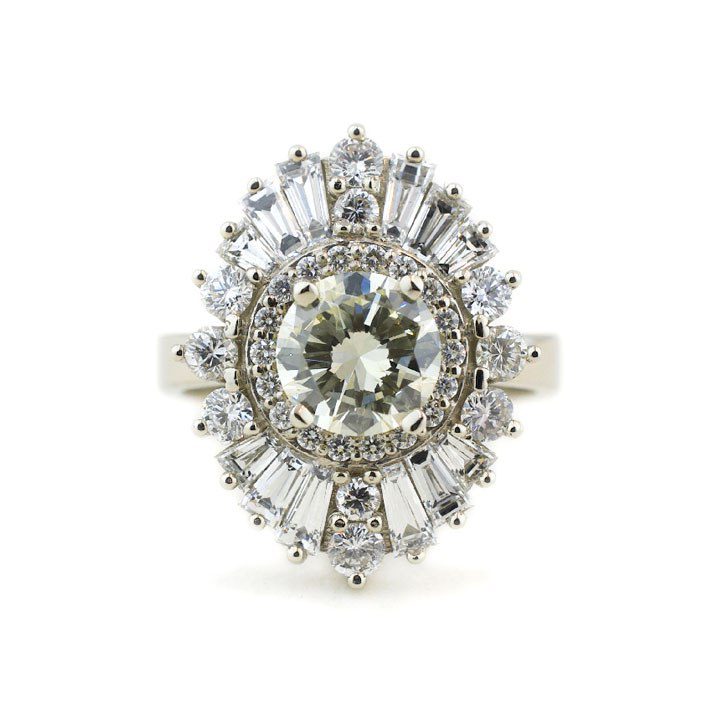

Inspired by the past, a vintage inspired engagement ring emulates a specific style that became popular during a certain era. Victorian, Edwardian and Art Deco eras all offer distinct styles and they typically have ornate designs and elaborate embellishments.
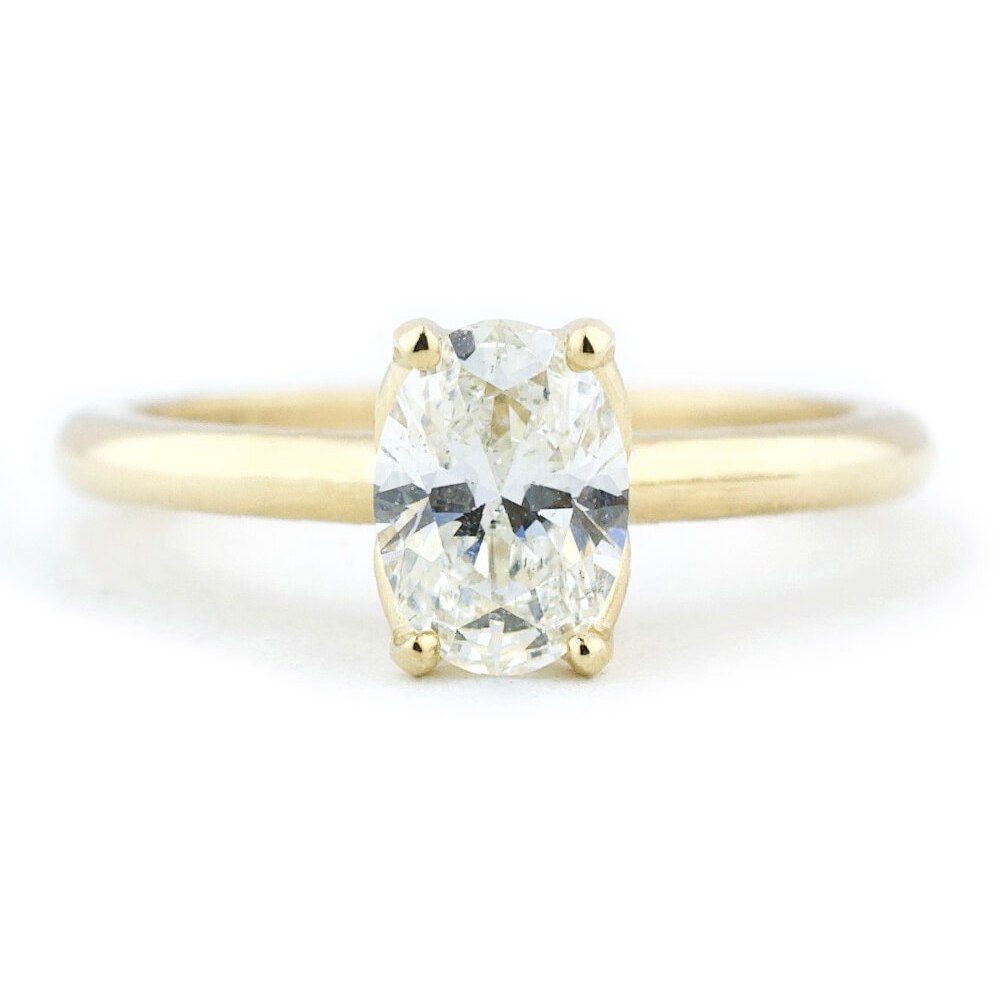

Solitaire
Solitaires are the most popular and classic engagement ring style, featuring a single stone on a band.
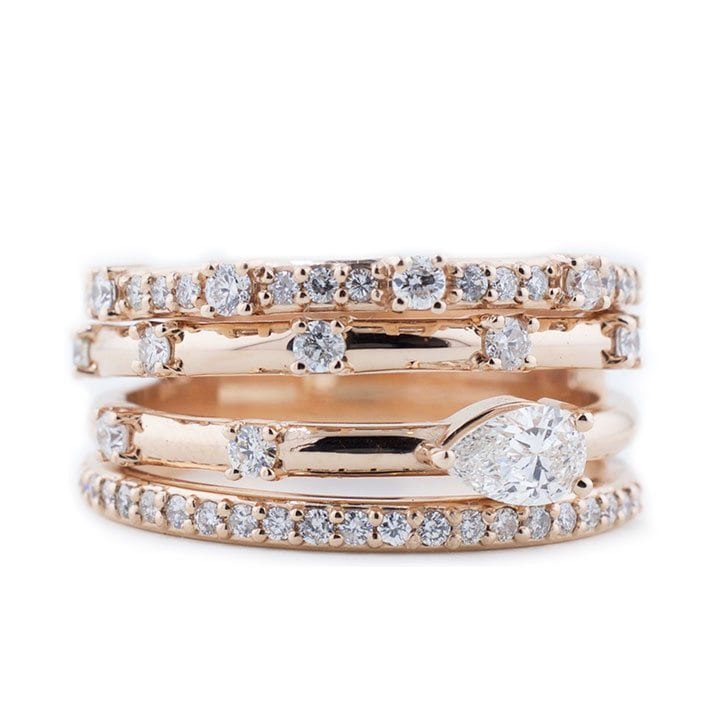

Permastack
Permastack is a signature ASJ style that gives the appearance of multiple smaller stacking rings, but is actually connected in the back for a more secure design.
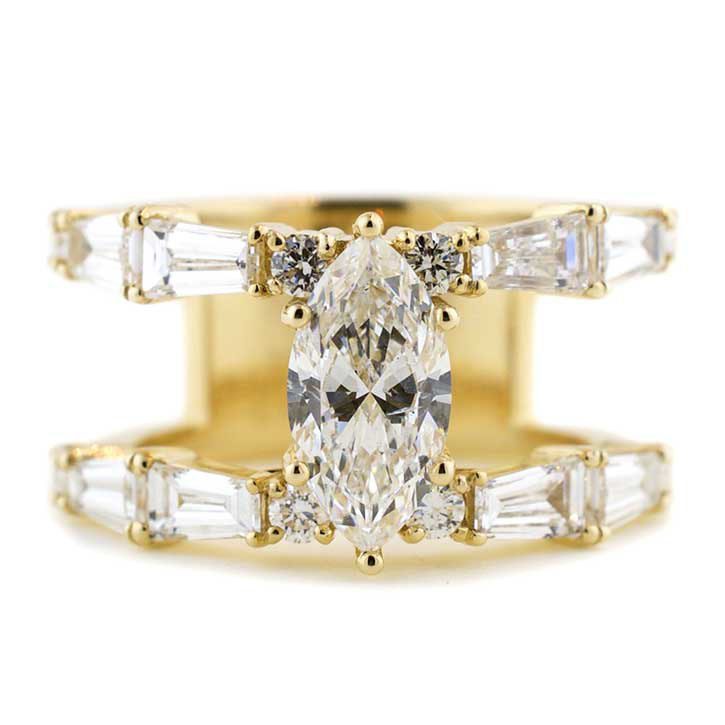

Double Band
A type of split shank engagement ring, double bands have very defined negative space between two bands, connecting at the back of the ring.
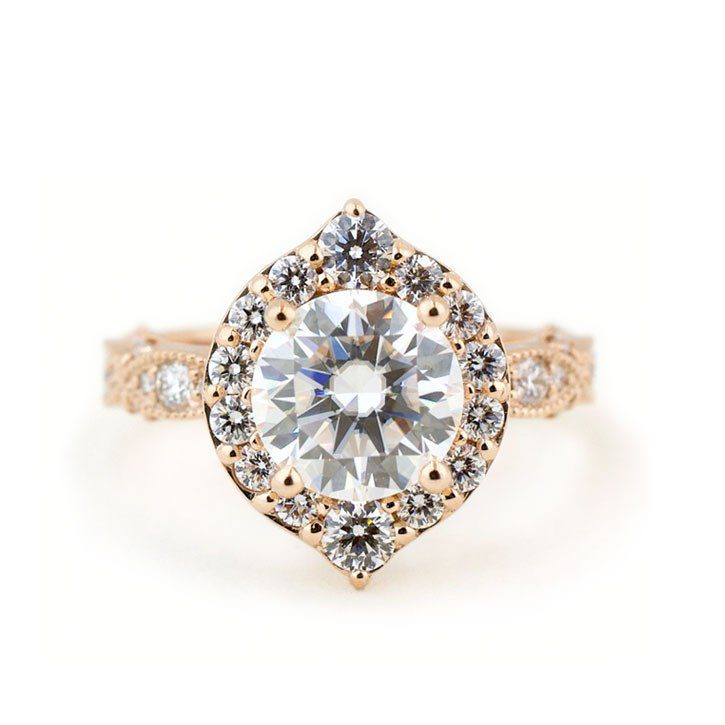

Feminine
When clients ask for a feminine style, it typically translates into minimal metal, delicate details and potentially rose gold and floral embellishments.


Some styles are so non-traditional, they go beyond definition.
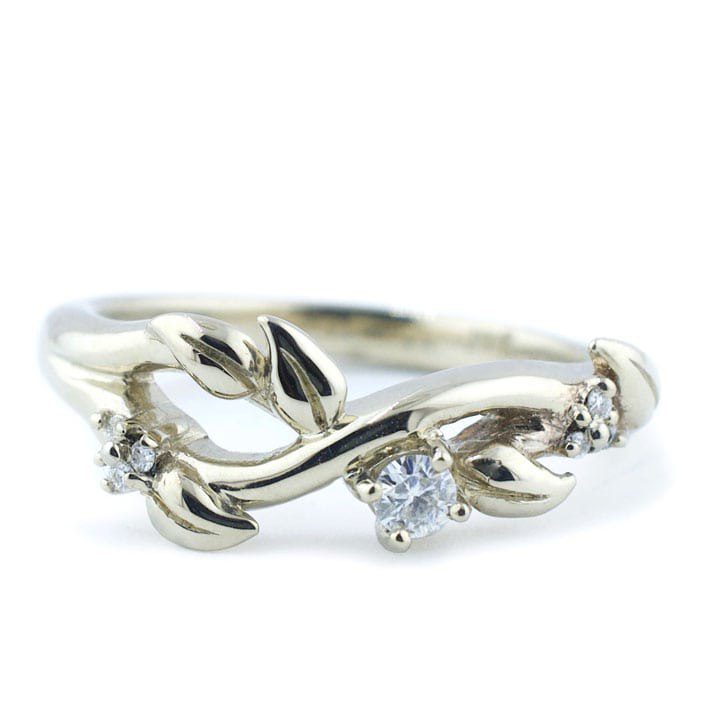

No Center Stone
Rings without an obvious center stone can feature multiple smaller stones in a cluster or asymmetrical pattern.
Design Details
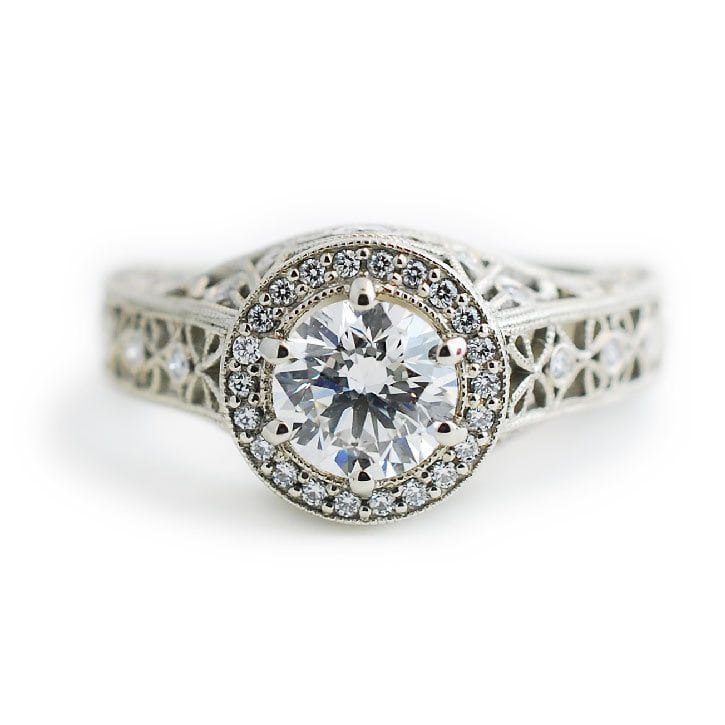

Filigree
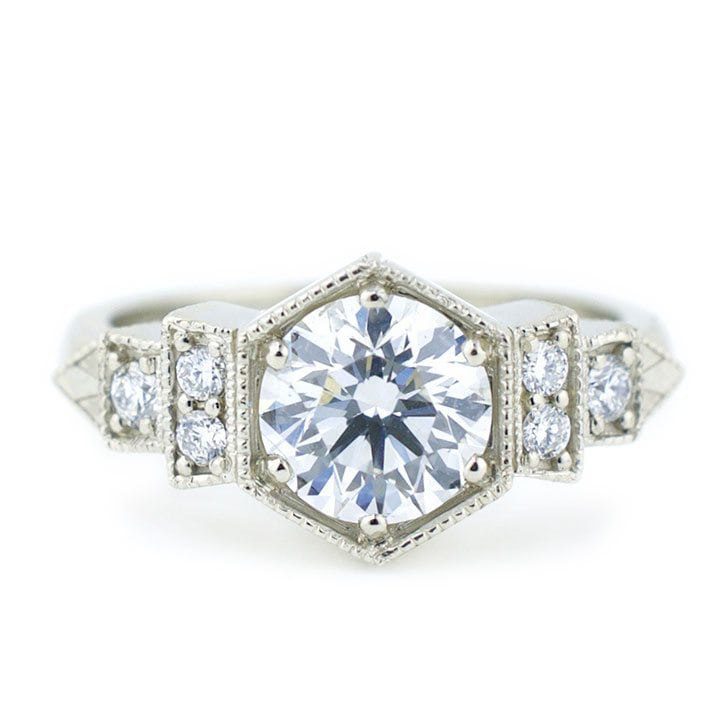

Milgrain
Milgrain is another antique-inspired detail where metal dots create intricate designs, or simply encircle the center stone.


A cathedral setting approximates the look of the arches of a church cathedral when viewed from the side. This center stone can be set in a variety of ways and the arch can be subtle or dramatic.


Pave means that tiny holes have been drilled into the setting with very small diamonds placed inside, as if paved into it, for an overall effect of glittering sparkle.
Wondering About Budget?
Learn all about how to set your budget, or work within your budget from our Engagement Ring Budget Guide.








